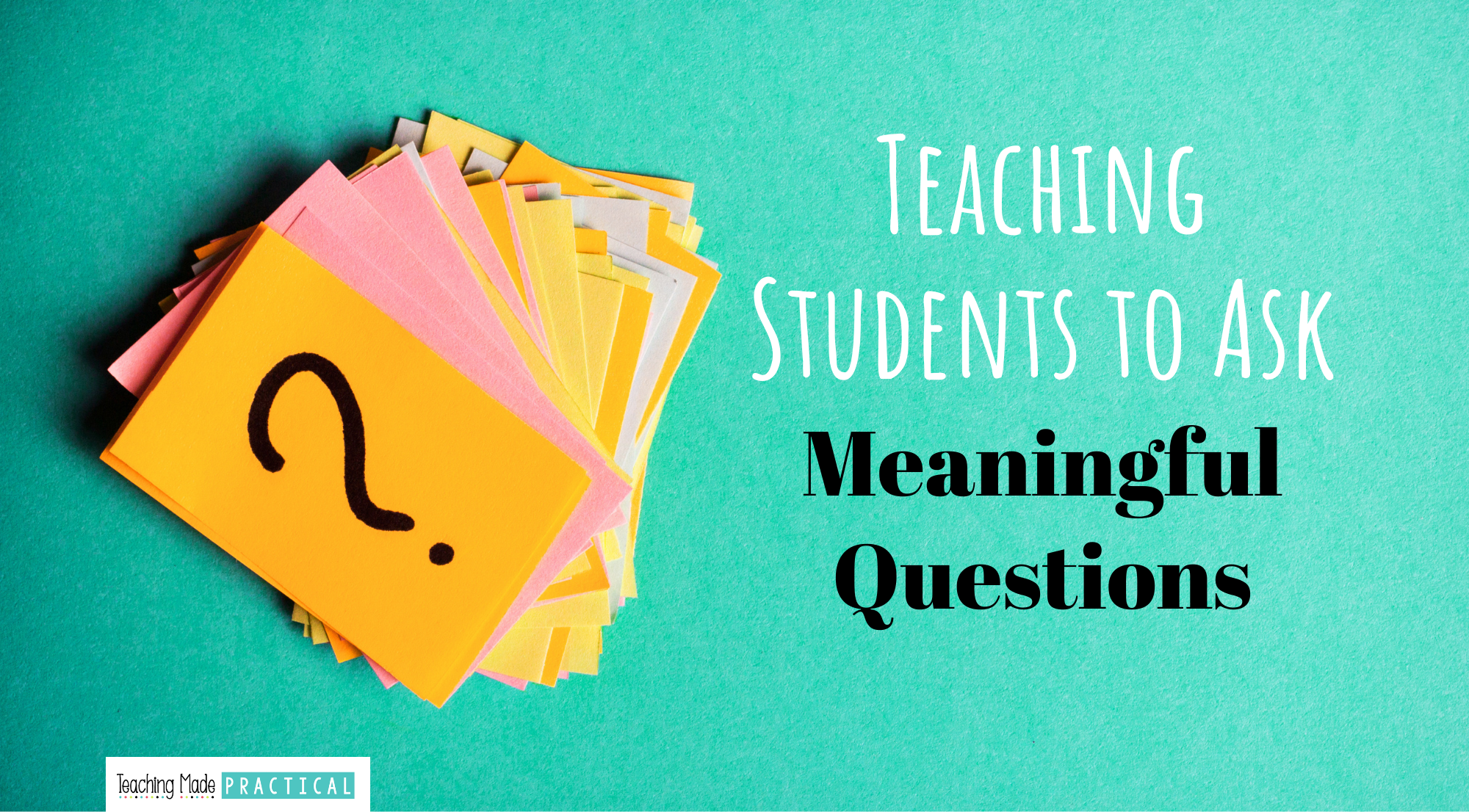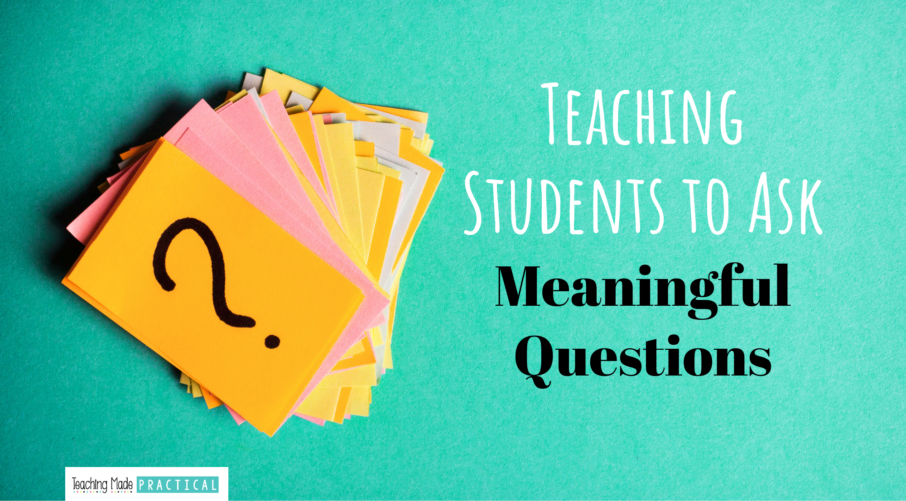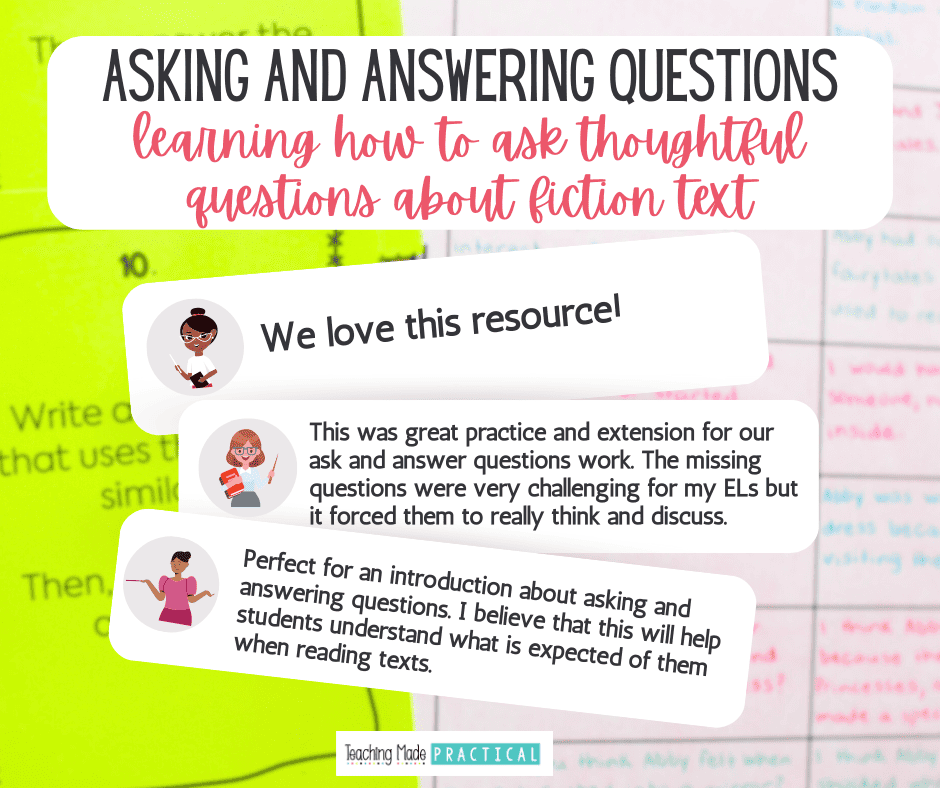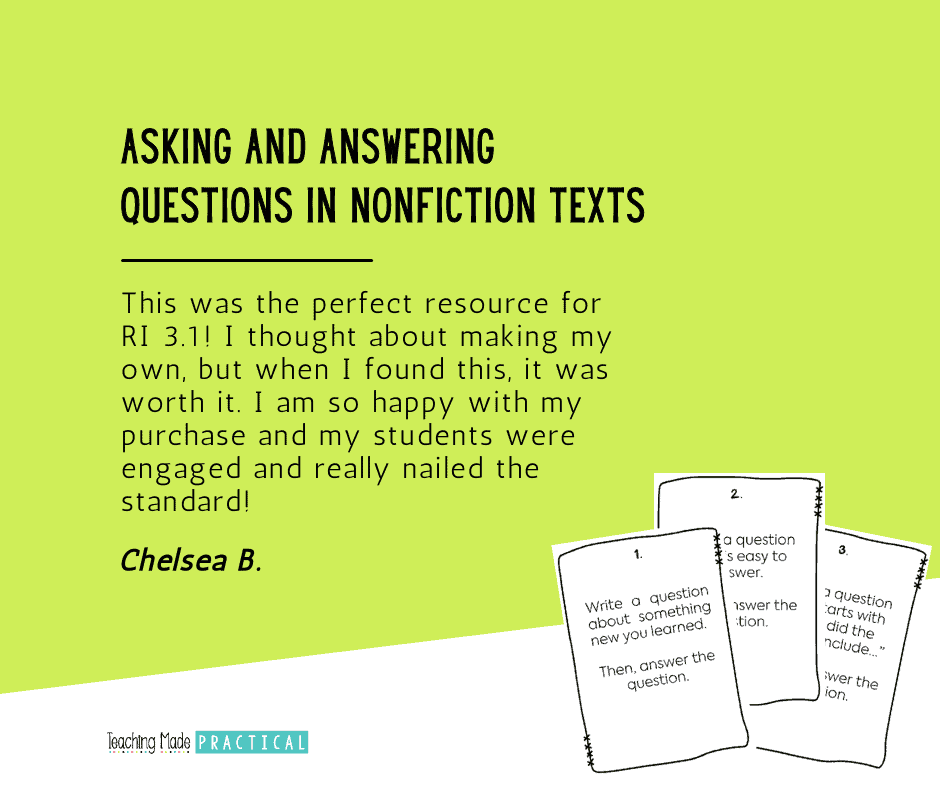
Students ask thoughtful, surprising questions all the time, even from a young age. But for some reason, once they are encouraged to ask meaningful questions in a school setting, 3rd, 4th, and 5th grade students freeze up - especially if they are supposed to be asking questions about a text.
By providing a little scaffolding, upper elementary students can learn how to ask questions while reading. Use these 4 strategies below to help teach your students how to ask meaningful questions about a reading passage, book, or text.
1. Provide Question Stems / Question Frames
Giving students a structure to guide them is one of the best ways to scaffold their questioning skills. Question stems and frames give students a place to start and help them better understand what is being expected of them.
We often introduce students to question words (who, what, when, where, why, how), but many students need additional scaffolding. Provide question stems and frames like:
- How are _____ and _____ similar?
- How are _____ and _____ different?
- What happened after _____?
- What would have been different if _____?
- Why did _____?
- Why do you think the author _____?
- When did _____?
- Do you agree with _____?
- How does the text feature _____ help you understand _____?
Let upper elementary students use these questions stems / frames to ask their own questions while reading.
Sentence starters and paragraph frames are also helpful for longer writing activities, like a compare and contrast essay or with opinion writing.
2. Provide Students With An Answer and Have Them Come Up With a Question
This is an often overlooked strategy. By providing students with an answer, you are once again giving students a starting place so they aren't having to come up with questions from thin air.
You could provide students with a less specific answer that could be the answer to a bunch of different questions, or you could provide students with a specific answer that would lead students to a certain question.
For example, a less specific answer might be "Hermione Granger."
This could be the answer to MANY questions, yet it gives students a starting place as they think about possible questions.
A more specific answer might be "Vernon Dursley didn't like things anything related to magic, including letting Harry go to school to learn how to use magic."
This answer would lead students to a more specific question - probably something similar to, "Why didn't Vernon Dursley want Harry to go to Hogwarts?"
(By the way, if you or your upper elementary students are Harry Potter fans, then you might like some of these books for people who love Harry Potter.)
3. Provide Students with Specific Prompts
Once students become more comfortable with the idea of asking questions, they still often struggle with coming up with higher level thinking questions while reading. (Heck, teachers struggle with this! That's why these questions to promote higher level thinking for different reading skills are so popular!)
Providing a variety of prompts for students can help them think about how to ask a variety of different questions that they might not have come up with on their own.
This can also be a good opportunity to review different reading skills. Prompt students to ask a question related to whatever reading skill you are working on. Some examples are below.
Tell students to:
- Ask a question about the character traits of one of the main characters.
- Ask a question about the most important event in the text.
- Ask a question about your favorite part of the text.
- Ask a question that uses the word 'effect.'
- Ask a question about an unusual word you noticed in the text.
With prompts like this, students will be required to think more critically about the questions they are asking, while still gradually releasing responsibility to them.
Prompts like this for both nonfiction and fiction texts are often a teacher's favorite activity of my Asking and Answering Questions Bundle.
4. Have Students Create Their Own Test Questions
This is a fun culminating activity after students have had a lot of practice with asking questions. Since students have (unfortunately) had a lot of practice taking tests over the years, they have already seen this modeled repeatedly. The scaffolding is built in!
3rd, 4th, and 5th grade students will love being the ones to create the test for once. Tell them to create an answer key - so they not only need to provide the test questions, but also the answers.
For a bit of extra fun, have students trade their test questions with a partner and see if they can answer each other's questions!
This Asking and Answering Questions Bundle includes activities and reading passages for all of these ideas - without any of the prep work.
This resource will help guide students into asking quality questions in both fiction and nonfiction texts.
Or, find more tips on scaffolding instruction for upper elementary students.
Never Stress Over Sub Plans Again!

Make copies, find a fiction book, and you'll be ready for any emergency that comes your way!



